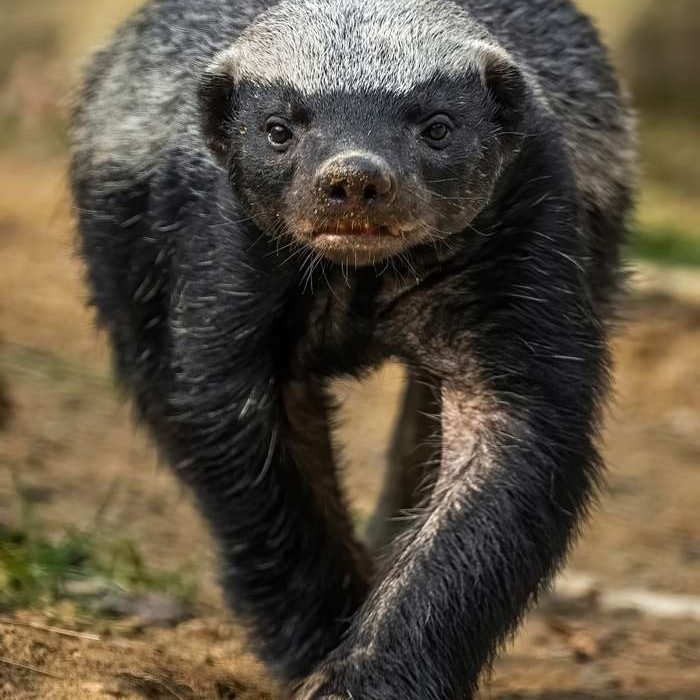Bushpig
- Potamochoerus larvatus
- IUCN Status: Least Concern
- Trend: stable

General Information
The bushpig is a large wild pig that is found in urban areas, forests, woodlands, and savannas throughout Zambia.
Description
Bushpigs are about the size of a domestic pig, with a body length of up to 1.7 meters and a weight of up to 130 kilograms. They have reddish-brown fur, a white mane, and white ear tufts. The ears have tassels of long hairs. Their very sharp tusks are fairly short and inconspicuous. Unlike warthogs, bushpigs run with their long and thin tails down. Males are normally larger than females. Old males develop two warts on their snout. Piglets are born with pale yellowish longitudinal stripes on a dark brown background; these soon disappear and the coat becomes reddish brown, with a black and white dorsal crest in both sexes. This mane bristles when the animal becomes agitated.
Fun Facts
Bushpigs are an important part of the Zambian ecosystem. They help to control insect populations, and they are a food source for predators such as lions, leopards, and hyenas.
Ecology & Behaviour
Bushpigs are most active at night, spending the day resting in thickets or under trees. They are omnivores, and their diet consists mainly of grasses, leaves, roots, fruits, insects, and small mammals. They are social animals and live in groups of up to 20 individuals. They are most active at night and spend most of their time foraging for food. Bushpigs are also very vocal animals and communicate with each other using a variety of calls. Bushpig will range up to 4 km from their hide in a night to feed.
Diet
Bushpigs are most active at night, spending the day resting in thickets or under trees. They are omnivores, and their diet consists mainly of grasses, leaves, roots, fruits, insects, and small mammals. They are social animals and live in groups of up to 20 individuals. They are most active at night and spend most of their time foraging for food. Bushpigs are also very vocal animals and communicate with each other using a variety of calls. Bushpig will range up to 4 km from their hide in a night to feed.
Reproduction
Bushpigs are most active at night, spending the day resting in thickets or under trees. They are omnivores, and their diet consists mainly of grasses, leaves, roots, fruits, insects, and small mammals. They are social animals and live in groups of up to 20 individuals. They are most active at night and spend most of their time foraging for food. Bushpigs are also very vocal animals and communicate with each other using a variety of calls. Bushpig will range up to 4 km from their hide in a night to feed.
Conservation
It is listed as a “least concern” on the International Union for Conservation of Nature (IUCN Red List. Bushpigs are not considered to be threatened in Zambia, but their populations are declining due to habitat loss and poaching. It is important to protect bushpigs and their habitat so that they can continue to play their vital role in the ecosystem.
Interaction with Humans
Bushpigs are very aggressive and extremely powerful. In one case, a game scout was forced to spend three days in a tree, avoiding a stalking bushpig. Wounded bushpig are very dangerous; their spoor should not be followed alone. They are fast, and can swim well.













